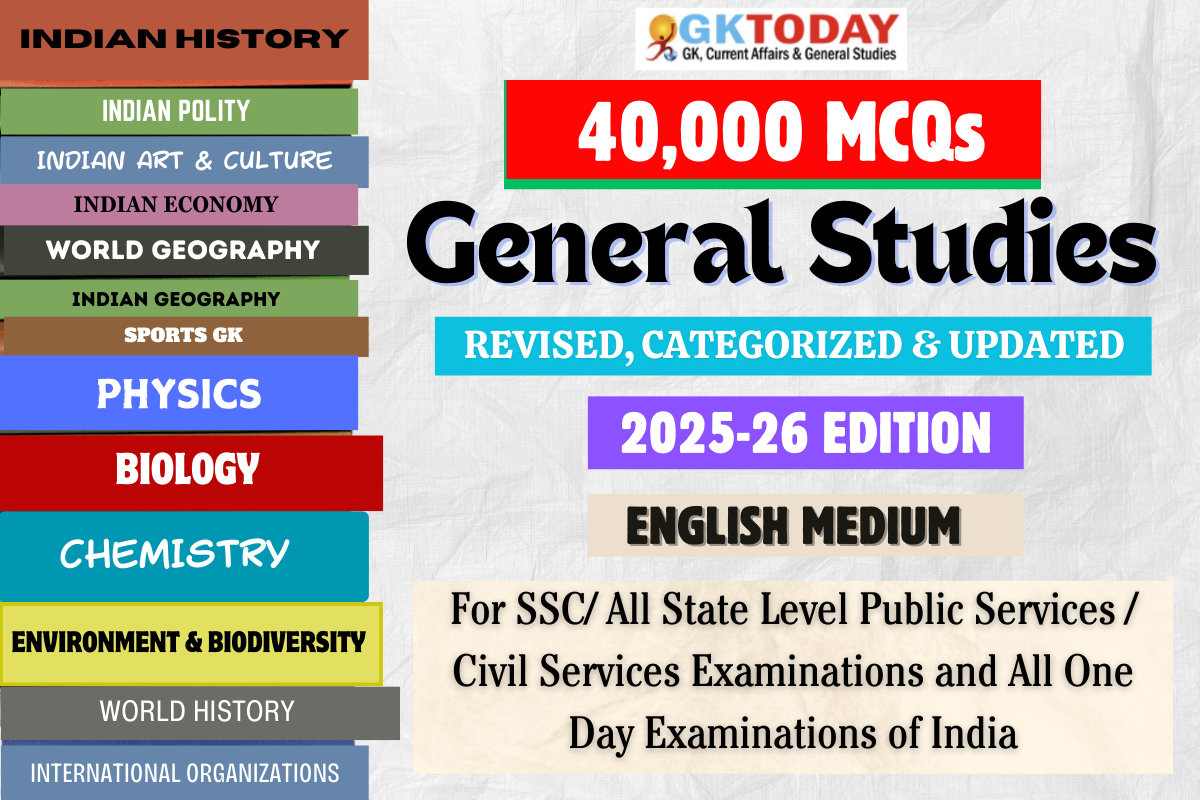Ancient Indian History MCQs
Multiple Choice Quiz Questions (MCQs) on Ancient Indian History for General Studies and GK preparation of SSC, NDA, CDS, UPSC, UPPSC and State PSC Examinations.
41. Which of the following kings wrote Prashnottara Ratnamalika?
[A] Govind III
[B] Dantidurga
[C] Dhruva
[D] Amoghavarsha I
Show Answer
Correct Answer: D [Amoghavarsha I]
Notes:
Amoghavarsha who ruled the Rashtrakuta empire from 814 A.D. to 878 A.D was an accomplished poet and scholar. He wrote Prashnottara Ratnamalika in the Sanskrit language, which is considered as a writing of high merit and was later translated into the Tibetan language.
42. Which of the following succeeded Pulkshein II after pushing the Pallavas out of Badami?
[A] Kirtivarman I
[B] Vikramaditya I
[C] Vikramaditya II
[D] Vinayaditya I
Show Answer
Correct Answer: B [Vikramaditya I]
Notes:
The Chalukyan King Vikramaditya I succeeded in pushing the Pallavas out of Badami after the death of Pulkshein II and reestablished his authority over whole kingdom. He not only defeated the successive Pallava rulers but also captured their capital Kanchi.
43. The Pallavas established their capital at which of the following places?
[A] Vengi
[B] Kanchi
[C] Nalanda
[D] Sanchi
Show Answer
Correct Answer: B [Kanchi]
Notes:
The area under the control of Pallavas comprised of southern Andhra Pradesh and northern Tamil Nadu. They established their capital at Kanchi. Kanchi (modern Kanchipuram) became an important temple town and a centre of trade and commerce.
44. Which of the following Chola king was defeated by the Rashtrakuta ruler Krishna III at the battle of Takkolam?
[A] Parantaka I
[B] Parantaka II
[C] Uttama Chola
[D] Arumolivarman
Show Answer
Correct Answer: A [Parantaka I ]
Notes:
In c.949 CE the Chola king Parantaka I was defeated by the Rashtrakuta ruler Krishna III at the battle of Takkolam. With this, Krishna III adopted the title of ‘Conqueror of Kanchi and Tanjai’.
45. Which of the following is the official State emblem of India?
[A] Lion Capital of Ashoka
[B] Bodhi Tree
[C] Ashoka Chakra
[D] None of the above
Show Answer
Correct Answer: A [Lion Capital of Ashoka ]
Notes:
The Lion capital of Ashoka, currently preserved in the Sarnath museum, is the official state emblem of India.
46. Who was the greatest king of Satavahana dynasty?
[A] Hala
[B] Simuka
[C] Satkami I
[D] Gautamiputra Satkarni
Show Answer
Correct Answer: D [Gautamiputra Satkarni]
Notes:
Gautamiputra Satakarni (78-102 A.D) is often acknowledged by historians as the greatest of the Satavahana rulers. He defeated the Yavanas, Sakas, and Pallavas and re-established the ancient glory of the Satavahanas. He performed two Ashwamedha sacrifices.
47. What was the the capital of Pallavas?
[A] Mahabalipuram
[B] Kanchi
[C] Vatapi
[D] Trichnapalli
Show Answer
Correct Answer: B [Kanchi]
Notes:
Pallavas ruled regions of northern Tamil Nadu and southern Andhra Pradesh between the second to the ninth century CE. Kanchipuram served as the capital city of the Pallava Kingdom from the 4th to the 9th century. It is also known by its former names Kanchiampathi, Conjeevaram, and the nickname “The City of Thousand Temples’. Kanchipuram was mentioned in the Mahabhasya, written by Patanjali in the 2nd century BC. Huien Tsang visited this city and wrote about its glorious culture. The Pallavas were the first well-known dynasty in the history of South India after the fall of the Satavahanas.
48. Consider the following beliefs of Buddhism:
- The world is full of sorrows.
- People suffer on account of desires.
- If desires are conquered, nirvana will be attained.
- The existence of God and Soul must be recognised.
Which of the above statements is / are correct?
[A] All of the above
[B] Only 2 and 3
[C] Only 1, 2 and 3
[D] Only 2, 3 and 4
Show Answer
Correct Answer: C [Only 1, 2 and 3]
Notes:
The Four Noble Truths are one of the central teachings of the Buddhist tradition. The teachings on the four noble truths explain the nature of dukkha ( “suffering”, “anxiety”, “stress”, “dissatisfaction”), its causes, the possibility of its cessation and how it can be overcome. The four truths are presented within the Buddha`s first discourse, Setting in Motion the Wheel of the Dharma (Dharmacakra Pravartana Sutra).
49. What is the name of compiled stories from Buddha’s birth and his previous lives?
[A] Panchatantra tales
[B] Jataka-tales
[C] Triratnas
[D] Tripitakas
Show Answer
Correct Answer: B [Jataka-tales]
Notes:
The Jataka tales are a voluminous body of literature on the previous births of Gautama Buddha in both human and animal form. Part of the canon of sacred Buddhist literature, it consists of some 550 anecdotes and fables depicts earlier incarnations of the Buddha. Most of the Jataka tales date to the 4th century B.C.
50. Arrange the following Mahajanpadas from east to west direction:
- Anga
- Kasi
- Panchala
- Kamboja
Choose the correct answer from the codes given below:
[A] 1-2-3-4
[B] 1-3-2-4
[C] 2-1-4-3
[D] 2-4-1-3
Show Answer
Correct Answer: A [1-2-3-4]
Notes:Mahajanapadas west to east are Avanti, Matsya, Kosala and Magadha. There were many states of the Aryans in North India, around the 6th century BC. These states were called the Mahajanapadas. There were sixteen of such Mahajanapadas: Kasi, Kosala, Anga, Magadha, Vajji, Malla, Chedi, Vatsa, Kuru, Panchala, Machcha, Surasena, Assaka, Avanti, Gandhara and Kamboja. Literally Mahajanapadas means. Great Kingdoms. Before Budhism. rose in the country, these flourished in the north western parts of India. Aryans were seen migrating to the country. As per the Vedic texts, these Aryan tribes were known as the Janas. Later these Vedic Janas merged with Janapadas. Many of these became big political bodies. In the Budhist traditions, these kingdoms came to be known as Mahajanapadas.



